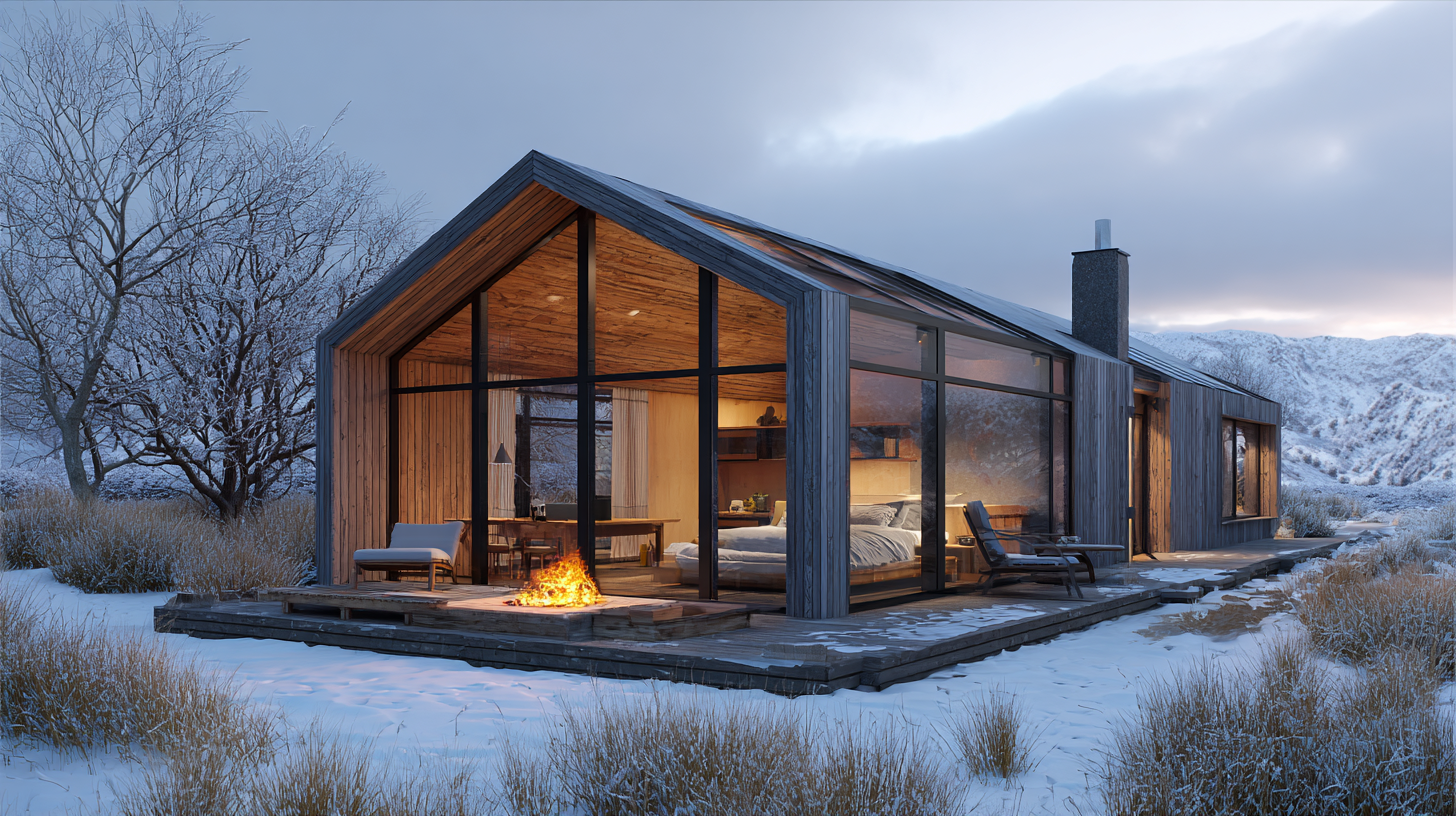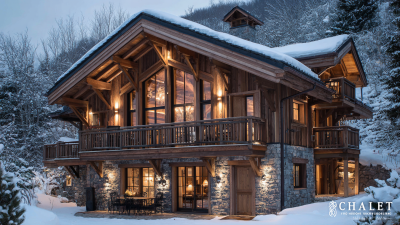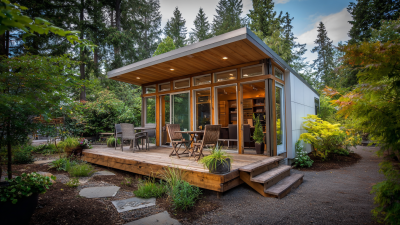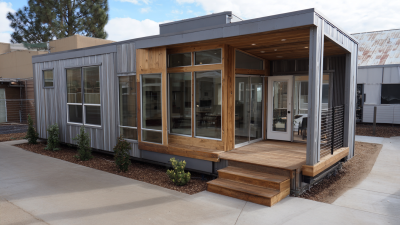 As the global focus on sustainability intensifies, more individuals are seeking innovative solutions that blend environmental consciousness with modern living. One such solution gaining traction is the concept of the Prefabricated Cabin. According to a report by McKinsey & Company, the construction industry is responsible for nearly 39% of global carbon emissions, highlighting an urgent need for more sustainable practices. Prefabricated cabins, manufactured off-site and assembled on location, offer significant reductions in construction waste and energy consumption. A study by Build With Strength shows that prefabricated homes can result in up to 50% less waste during construction compared to traditional building methods. Furthermore, with a growing demand for eco-friendly housing options, the market for prefabricated homes is expected to expand significantly, projected at a compound annual growth rate (CAGR) of 6.29% from 2021 to 2028. Embracing the concept of prefabricated cabins not only supports sustainable living but also presents an opportunity to innovate our approach to housing.
As the global focus on sustainability intensifies, more individuals are seeking innovative solutions that blend environmental consciousness with modern living. One such solution gaining traction is the concept of the Prefabricated Cabin. According to a report by McKinsey & Company, the construction industry is responsible for nearly 39% of global carbon emissions, highlighting an urgent need for more sustainable practices. Prefabricated cabins, manufactured off-site and assembled on location, offer significant reductions in construction waste and energy consumption. A study by Build With Strength shows that prefabricated homes can result in up to 50% less waste during construction compared to traditional building methods. Furthermore, with a growing demand for eco-friendly housing options, the market for prefabricated homes is expected to expand significantly, projected at a compound annual growth rate (CAGR) of 6.29% from 2021 to 2028. Embracing the concept of prefabricated cabins not only supports sustainable living but also presents an opportunity to innovate our approach to housing.
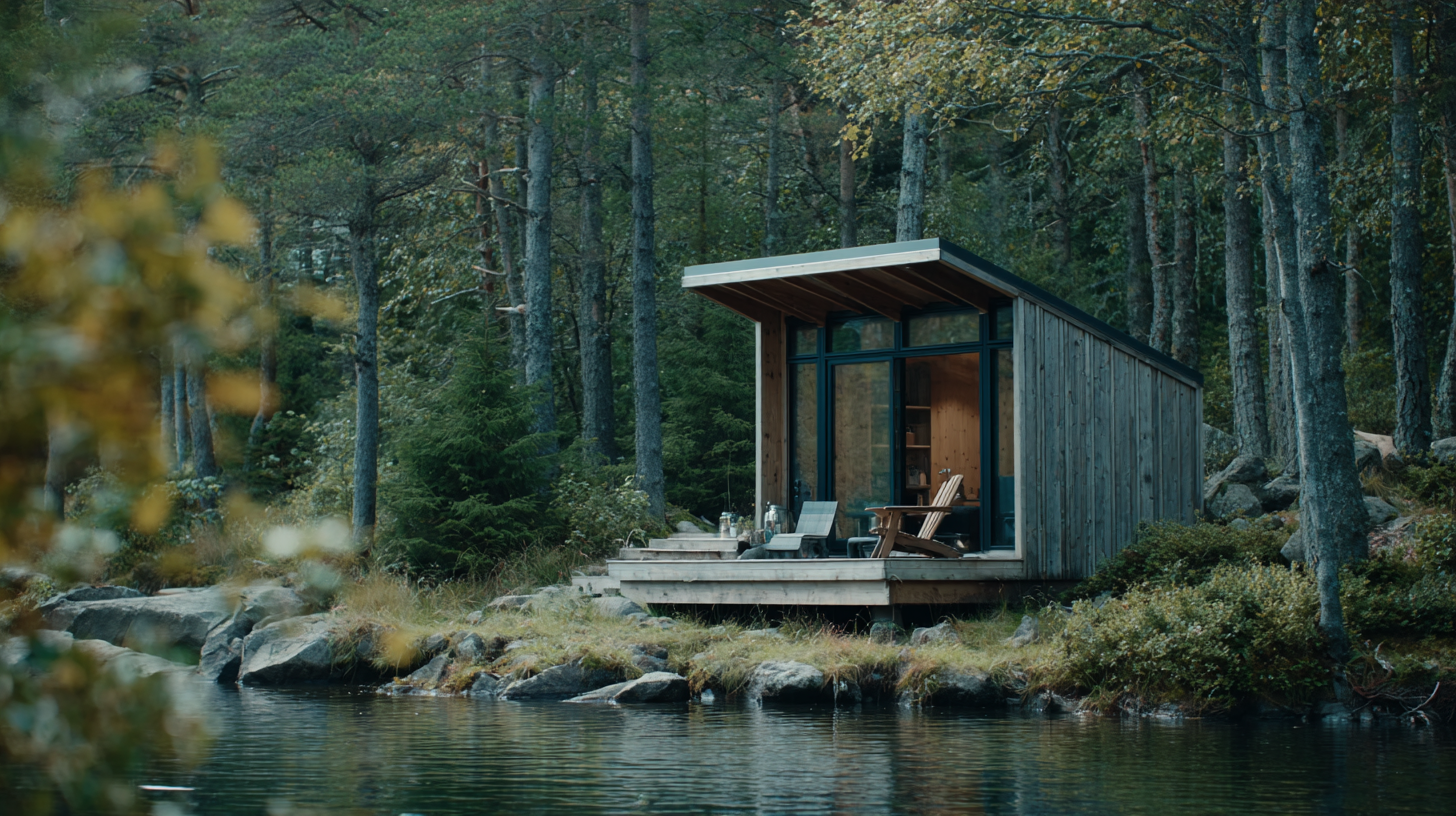 Sustainable living is an approach that seeks to minimize our environmental impact while fostering a balanced relationship with nature. It encompasses various practices, from reducing waste and conserving energy to choosing eco-friendly materials and supporting local economies. Understanding sustainable living is essential not only for our own well-being but also for the health of future generations. By adopting this mindset, individuals can contribute to conserving resources and preserving ecosystems, making a lasting positive impact on the planet.
Sustainable living is an approach that seeks to minimize our environmental impact while fostering a balanced relationship with nature. It encompasses various practices, from reducing waste and conserving energy to choosing eco-friendly materials and supporting local economies. Understanding sustainable living is essential not only for our own well-being but also for the health of future generations. By adopting this mindset, individuals can contribute to conserving resources and preserving ecosystems, making a lasting positive impact on the planet.
The importance of sustainable living is increasingly recognized as we face pressing global challenges such as climate change, dwindling natural resources, and biodiversity loss. By prioritizing sustainable practices, we can reduce our carbon footprint and promote environmental stewardship. Prefabricated cabins, for instance, offer an innovative solution that aligns with sustainable living principles. They are designed for energy efficiency, often using renewable materials and reducing waste during construction. As more people choose to live in such environmentally friendly structures, the movement toward sustainable living gains momentum, encouraging a healthier and more sustainable future for all.
Prefabricated cabins represent a modern approach to sustainable living, offering numerous advantages that appeal to both eco-conscious individuals and those seeking efficient housing solutions. One of the primary benefits is the reduced environmental impact associated with their construction. Unlike traditional building methods that often generate significant waste, prefabricated cabins are manufactured in controlled environments where materials are carefully managed. This process minimizes excess waste and optimizes resource use, aligning perfectly with sustainability goals.
Additionally, prefabricated cabins are designed for energy efficiency. Many models incorporate sustainable technologies such as solar panels, rainwater harvesting systems, and superior insulation, which significantly lower energy consumption. This not only translates into reduced utility bills for homeowners but also contributes to a smaller carbon footprint. Furthermore, the speed of construction is another key advantage; these cabins can be assembled quickly, allowing for faster occupancy without compromising quality. This swift building process also reduces labor costs and lowers the overall investment in time and resources, making prefabricated cabins an increasingly popular choice for those looking to embrace sustainable living.
| Key Advantage | Description | Environmental Impact |
|---|---|---|
| Energy Efficiency | Prefabricated cabins are often built with superior insulation materials that reduce energy consumption for heating and cooling. | Lower carbon footprint due to reduced energy needs. |
| Reduced Waste | The controlled construction environment allows for less waste compared to traditional building methods. | Minimizes landfill contributions and promotes recycling of materials. |
| Quick Assembly | Prefabricated cabins can be assembled in a fraction of the time it takes for traditional builds. | Shorter construction time means less resource consumption and lower emissions from construction equipment. |
| Customization | They can be tailored to fit individual needs while maintaining sustainable practices in design. | Support for diverse living solutions that reduce the use of natural resources. |
| Cost-Effectiveness | Lower costs due to reduced labor and material waste. | Promotes sustainable economic practices by making eco-friendly living more accessible. |
Prefabricated cabins are becoming increasingly popular among those seeking an
eco-friendly lifestyle. These structures are designed with sustainability in mind,
utilizing materials that have a lower environmental impact compared to traditional building methods. By opting for prefabricated cabins, individuals can minimize waste generated during
the construction process since these units are built off-site and transported to their final location. This streamlined approach not only reduces the
carbon footprint but also promotes efficient use of resources.
Moreover, prefabricated cabins often incorporate energy-efficient features, such as solar panels and insulation made from recycled materials.
These innovations help reduce energy consumption and reliance on non-renewable resources, further aligning with sustainable living principles.
The compact design of these cabins also fosters a minimalistic lifestyle, encouraging occupants to downsize and live more consciously
about their consumption habits. By embracing the simplicity and efficiency of prefabricated cabins, individuals can significantly contribute to a more sustainable future while enjoying the comforts of
modern living.
Sustainable living has gained immense popularity, and prefabricated cabins are at the forefront of this movement, particularly in terms of cost-effectiveness. These innovative housing solutions are not only affordable but also environmentally friendly. By utilizing sustainable materials and efficient manufacturing processes, prefabricated cabins minimize waste and reduce the carbon footprint associated with traditional construction methods. Homeowners can save significantly on both initial investments and long-term utility costs, making sustainable living more accessible than ever.
Tips for choosing the right prefabricated cabin include considering energy-efficient designs and materials. Look for cabins that feature proper insulation and solar panels to maximize energy savings. Additionally, research local regulations and financing options to make the transition smoother and more affordable. Engaging with reputable companies that specialize in sustainable housing can further ensure that your investment aligns with both your budget and your eco-friendly values.
Another consideration is the potential for customization in prefabricated designs, allowing you to tailor the cabin to your specific needs without breaking the bank. From selecting energy-efficient appliances to incorporating rainwater harvesting systems, you can create a living space that enhances both sustainability and cost-effectiveness. Embracing sustainable prefabricated housing is not just an investment in your future but also in the planet’s well-being.
This chart illustrates the cost-effectiveness and environmental benefits of sustainable prefabricated housing compared to traditional construction methods.
The future of sustainable living is rapidly evolving, with trends pointing towards eco-friendly cabins as a viable solution for environmentally conscious individuals. Prefabricated cabins offer an innovative approach, combining efficiency and sustainability. These structures are designed with eco-friendly materials, utilizing renewable resources and minimizing waste during the construction process. As more people seek to reduce their carbon footprint, eco-friendly cabins provide an attractive and practical alternative to traditional homes.
To embrace this trend, consider these tips: First, prioritize materials—look for cabins made from sustainably sourced timber or recycled materials. Second, focus on energy efficiency by incorporating features such as solar panels and high-quality insulation, which can significantly reduce energy costs over time. Lastly, integrate natural surroundings into your living space, allowing for better airflow and natural light, which enhances both comfort and energy efficiency.
As the demand for sustainable living solutions grows, the market for prefabricated eco-friendly cabins is expanding. Future designs are expected to incorporate advanced technologies like smart home systems, enhancing energy management and contributing to a more sustainable lifestyle. By choosing a prefabricated cabin, individuals can enjoy a modern living experience while actively participating in the conservation of our planet.
